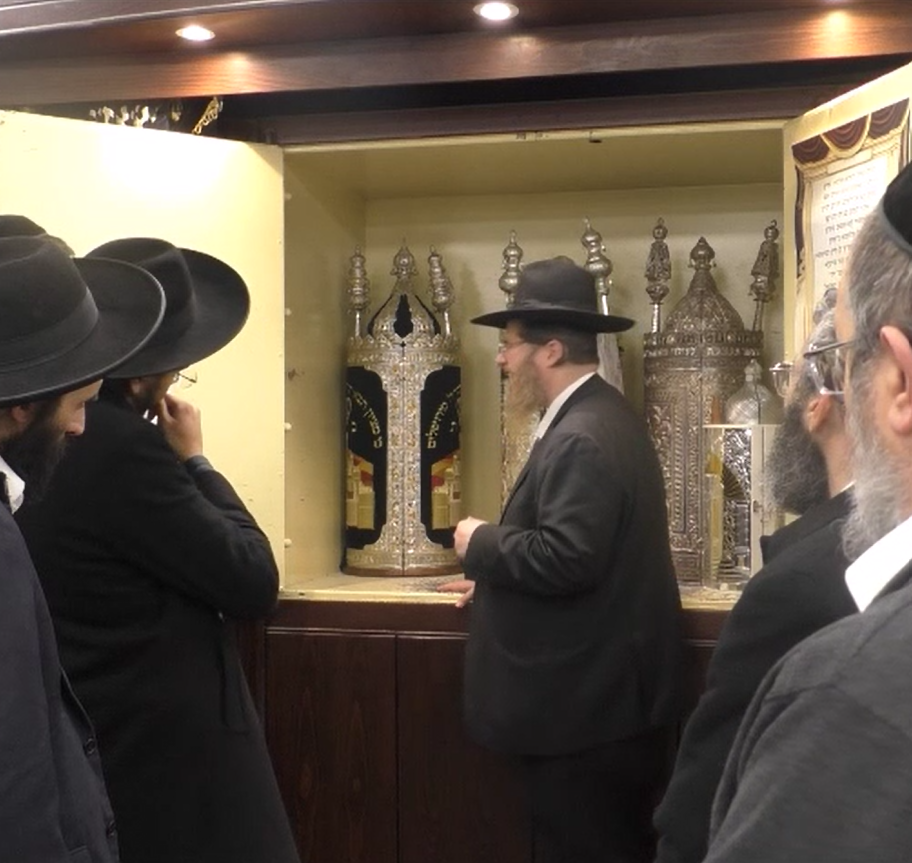The Rabbi Ovadia Yosef Biography
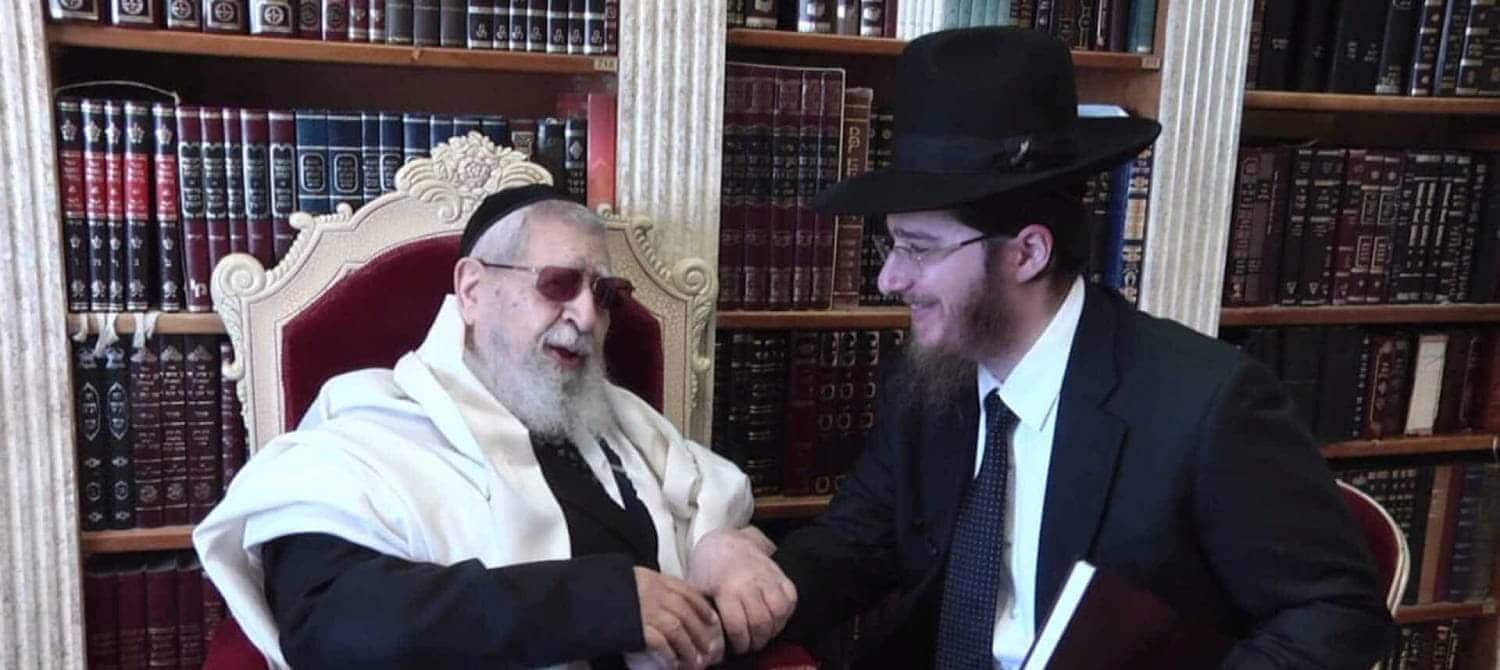
About the life story of Maran Rabbi Ovadia Yosef, several magnificent books can be written (and indeed they have been written), and in the article before you we bring the gist of things for the benefit of many.
Maran Rabbi Ovadia Yosef Zatzuk’l, was born in the land of Babylon (Iraq), in the city of Baghdad, on the 12th day of Tishrei in the year “Shesh Anchi” (1920 to 1920), to his parents, Rabbi Ya’akov The late and Mrs. Gorgia, “blessed is his birth”. Although his parents were apparently “simple people”, but they had special rights. His father, Rabbi Yaakov, the late, was exceptionally “a lover of Torah”, it is said of him that on Simchat Torah is an indescribable joy of the world, and he would overwhelm the entire audience with his joy. Rabbi Jacob was ready in the mouth of every “Yaakov Gala” after the name of the song “Gala Gala Ziv Hodi” which he sang with all his might on the day of Simchat Torah every year. With such a love for the Torah, surely he would also love the Torah sages with all his soul, well the Sages said, “Rabba said: Darchaim Rabbanan – Haw Lia Binin Rabbanan” (Shabbat 23 AB), that is, he who loves the Torah sages, wins whites Let there be Torah sages, and thus Rabbi Ya’akov won this holy soul, the like of which was not seen many generations before.
Maran’s first name at birth was “Ovadia Yosef”: “Ovadia” – after the name of Rabbi Abdullah Sumach, and “Yosef” – after the name of our Rabbi Yosef Chaim, who had the “Ben Ish Chai”. And his last name was “Ovadia”. However, Maran ZtZal made the name “Yosef” the family name, to avoid the combination “Ovadia Yosef Ovadia”, and also so that all his sons and descendants would be named “Yosef”, as a “virtue” against the evil eye.
And he is a boy
At the age of three, he ascended to the Holy Land together with his parents. Upon his arrival in Israel, he studied Talmud Torah “Bnei Zion”, and already from the dawn of his childhood it was evident that he was destined for greatness due to his immense devotion to the Torah, and that he was endowed with blessed talents, and above all, a desire and desire to promote the Torah and glorify it.
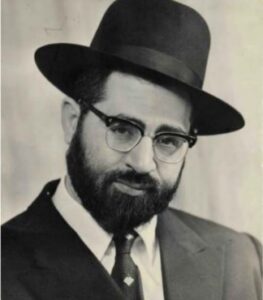 When the boy grew a little, due to the scarcity of livelihood in those days, his father took him to work with him in the supermarkets he owned, since he needed the boy’s help in the business. However, the boy’s soul longed for the Torah, and his soul was longed to get rid of this work and return to fully immerse himself in the study of the Holy Torah – when it was in the covenant with him. The extent of his love for the Torah was revealed by the great gaon Rabbi Ezra Atia ztzal who, as is known, served as the head of the Purat Yosef HaMtira Yeshiva, and was the greatest of his generation, and approached the young boy’s father with a surprising offer: he, the gaon Rabbi Atia ztzal, would work in the suit store in exchange for the boy’s, and thus The child will be free to engage in Torah (and Rabbi Atiya was not satisfied with the words alone, but went and sat on the salesman’s chair in the store, and also brought with him the head of the Kabbalists in Jerusalem Rabbi Ephraim HaCohen ztzal). When his father heard these words, he realized that his son was destined for greatness, gave him up and fired him from his day job, but the boy pledged to help his father every day early in the morning until the beginning of his studies at the yeshiva. However, the young boy’s connection to learning the Torah was so strong that while working in the store he would repeat and memorize his learning. And the Sages said, the one who comes to be purified helps him, and thus there were from time to time thefts in the store, and the child absorbed in the thoughts of studying the Torah could not pay attention to prevent those losses, over time, the customers also realized where the manager’s head really was during these hours on the store, and for reasons The boy’s father realized that the harm was greater than the benefit brought by the boy’s help, and then he was released to his studies during all hours of the day.
When the boy grew a little, due to the scarcity of livelihood in those days, his father took him to work with him in the supermarkets he owned, since he needed the boy’s help in the business. However, the boy’s soul longed for the Torah, and his soul was longed to get rid of this work and return to fully immerse himself in the study of the Holy Torah – when it was in the covenant with him. The extent of his love for the Torah was revealed by the great gaon Rabbi Ezra Atia ztzal who, as is known, served as the head of the Purat Yosef HaMtira Yeshiva, and was the greatest of his generation, and approached the young boy’s father with a surprising offer: he, the gaon Rabbi Atia ztzal, would work in the suit store in exchange for the boy’s, and thus The child will be free to engage in Torah (and Rabbi Atiya was not satisfied with the words alone, but went and sat on the salesman’s chair in the store, and also brought with him the head of the Kabbalists in Jerusalem Rabbi Ephraim HaCohen ztzal). When his father heard these words, he realized that his son was destined for greatness, gave him up and fired him from his day job, but the boy pledged to help his father every day early in the morning until the beginning of his studies at the yeshiva. However, the young boy’s connection to learning the Torah was so strong that while working in the store he would repeat and memorize his learning. And the Sages said, the one who comes to be purified helps him, and thus there were from time to time thefts in the store, and the child absorbed in the thoughts of studying the Torah could not pay attention to prevent those losses, over time, the customers also realized where the manager’s head really was during these hours on the store, and for reasons The boy’s father realized that the harm was greater than the benefit brought by the boy’s help, and then he was released to his studies during all hours of the day.
Well, Maran Zatzal, being still tender in his years, only twelve years old (an age that is not yet suitable for a small yeshiva), immersed himself in the world of Torah in the large yeshiva “Port Yosef”, which was located between the walls of ancient Jerusalem. The head of the yeshiva, Rabbi Ezra Atiya They became very close to him, and there are witnesses that he stood up before him, and ordained the rabbis, and he even expressed that if the Purat Yosef yeshiva had not been established, but to get Rabbi Ovadia Yosef out, it would have been worthwhile.
At the age of eighteen, Maran began to give halachic lessons to many in the “Ehal Rachel” synagogue, and from these lessons he began to compose the book “Halichoth Olam” which was printed many years later. At the age of twenty, he was certified “Ydin Yadin” (judgments, apart from what was already certified by the rabbis) by the then chief Rabbi Ben Zion Meir Chai Uziel ztzel.
His roles and movements
In the year 574, he married his rabbinical wife Margalit A.H., the daughter of the Gaon Rabbi Avraham Fatal zt’l. Since then, Maran began serving as a lawyer in the court of Rabbi the Gaon Rabbi Ezra Atiya, in this position he served until the year 577 ( 1947).
Being only twenty-seven years old, he was sent, after the consultation of the Rabbi Atiya zt’l, to serve in honor as the head of the court of Egypt (where he was also appointed to be the head of the local yeshiva of Cairo). While there, Maran worked with all his might for the spiritual improvement of the life of this multi-ethnic community, efforts that included significant changes in many areas to put religion on the back burner. Due to a false suspicion of espionage for the benefit of the State of Israel, Maran Zatzal was sent to prison by the Egyptian government, but all this did not prevent him from working to the best of his ability for the spiritual salvation of the community. After about two years, Maran Zetzal was forced to resign from his position, due to the motivations that were spread before him for the changes he demanded in the kashrut system.
Maran returned to Israel in 1950, and went to study at the important “kollel” of the rabbi of Jerusalem Rabbi Zvi Pesach Frank ztzel. Maran’s “companion” in those days was the Gaon Rabbi Shmuel Rosovsky ztzal , later one of the leaders of the Ponovizh yeshiva (and Maran z’at was used to saying that he wanted to learn the ways of “learning”, which he would learn from Rabbi Shmuel, because his opinion was honest and that he was privileged to be guided by the words of the ancients). In those days, the life of the Yosef family was a life of hardship and great poverty, and their apartment was extremely small. His little sons, due to the overcrowding in the apartment, would play under father’s couch. The cutlery they had were two plates and two spoons. The cradle for the eldest baby “Yaakov” was a wooden box that was used to store bananas, lined with several layers of cloth. necessary for the purchase of the ark, the rabbi a.a. devotedly donated the entire amount for the benefit of the publication of Shovat Yavia Omer part 1. The Torah is from poverty, its end is to sustain wealth”).
After several years, he moved to serve as a member of the Beit Din of the renowned genius Rabbi Reuven Katz ztzel who owns the Degel Reuven respondence, together with Rabbi Shelomo Karelitz ztzal, brother of the “Chazon Ish”. In 1959, Maran returned to Jerusalem, to serve as a lawyer together with Rabbi Shelomo ZTL, and the Rabbi Bezalel Zolti ZTL who is the author of “Mishnat Yabetz” (and later Rabba of Jerusalem).
Along with his roles in the rabbis, Maran Zat’l invested a lot in the vindication of the rabbis and the raising of the Torah fund, among other things by giving his lessons to the rabbis and other actions for the vindication of the rabbis, which were his signature throughout his life. As a result of his actions, many homeowners sent theirs to study in Torah settings, and the fruits are evident today, in generations Blessed Yashrim of the members of the Mizrahi sect, Bnei Torah 21.
In 1969, Maran was asked by his rabbi, Rabbi Ezra Atiya Zatzuk’l, to serve as the chief rabbi of Tel Aviv – Jaffa, in order to strengthen the spiritual character of the city.
In the position of “Rishon LeZion”
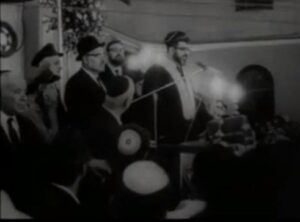 Maran held the position of chief rabbi of Tel Aviv until 1973 (1973), then, being fifty-two years old, he was required by the elders of Israel (among them Hagar Yosef Shalom Elyashiv ZtZal) to return to Jerusalem to serve as the first Lezion”, the chief rabbi of Sephardic Israel, to improve the function of the rabbinate in those days.
Maran held the position of chief rabbi of Tel Aviv until 1973 (1973), then, being fifty-two years old, he was required by the elders of Israel (among them Hagar Yosef Shalom Elyashiv ZtZal) to return to Jerusalem to serve as the first Lezion”, the chief rabbi of Sephardic Israel, to improve the function of the rabbinate in those days.
In his position as the first to Zion, Maran worked extensively in all areas, in order to instill a settled and correct halachic law for all the Israeli public, and his rulings began to be published and eagerly received by all levels of the public. Maran in his position, among his other undertakings, spent days and nights researching the condition of hundreds of Agonas, the wives of the missing in the Yom Kippur War, in order to find a permit for them, so that they could start a family again.
Maran also worked (and succeeded) to create a union in the Spanish public, that everyone would be as one man with one heart under the customs of Jerusalem, and not be divided by any sect under old customs from the countries of their exile.
After about ten years, in 1983, Maran’s tenure was terminated due to a political exercise. Maran regretted this very much, because it seemed to take away from him the power of influencing the public to strengthen them in the Torah and in keeping the mitzvot, apart from stopping the many activities in the Ha’it Agunot and the other areas that were dedicated By the holder of the position of “HaRishon LeZion”.
The establishment of the holy list
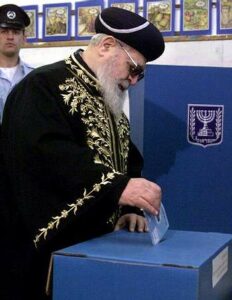 But even these hardships, of course, were under the care of the Creator (as Maran himself explained years later, and compared it to the verse in Genesis chapter 9: “And you thought evil of me, God thought good”), because due to his separation from a government position, it was possible It is legal for Maran the Most High to establish the Torah list “Shas”, which he headed as the “President of the Council of Torah Sages”, and Maran saw this political power as the powerful tool to realize his vision “to return the crown to its former glory” – to return to the people of the Mizrahi community the The spiritual values that have been lost from them in the past decades. It should be noted that the success of the list in those days was a “miracle”, against all predictions, since the Spanish ultra-orthodox public for God’s word was extremely sparse in those days, and only during the following decades, this valuable public grew wonderfully, precisely Due to the actions of Maren Ztzkal.
But even these hardships, of course, were under the care of the Creator (as Maran himself explained years later, and compared it to the verse in Genesis chapter 9: “And you thought evil of me, God thought good”), because due to his separation from a government position, it was possible It is legal for Maran the Most High to establish the Torah list “Shas”, which he headed as the “President of the Council of Torah Sages”, and Maran saw this political power as the powerful tool to realize his vision “to return the crown to its former glory” – to return to the people of the Mizrahi community the The spiritual values that have been lost from them in the past decades. It should be noted that the success of the list in those days was a “miracle”, against all predictions, since the Spanish ultra-orthodox public for God’s word was extremely sparse in those days, and only during the following decades, this valuable public grew wonderfully, precisely Due to the actions of Maren Ztzkal.
One of the significant achievements of the list, under the leadership of Maran Zetzal, was the establishment and maintenance of the Torah network (now “Bnei Yosef”), an enterprise thanks to which hundreds of thousands of children were able to receive a Torah education instead of a shabby secular education, and thus were able to establish houses of Torah and holiness in the place of Shemed Completely spiritual. These children today are fathers of families, and their sons and grandsons continue on the path of the Torah thanks to the holy enterprise, and the magnitude of the spiritual salvation of generations has no limit. For this achievement, Maran agreed to give up all his honor and status in the ultra-Orthodox public, since it was necessary for political measures to which they opposed Many of the sages of Israel from the Lithuanian stream (for their own reasons, and all of them meant for the sake of heaven, as Maran Zatzuk’l himself said about them in a lesson in “Levin”), and this reality caused that for many years Maran Zatzuk’l was persecuted by many of his contemporaries who did not follow the religion (as who were persecuted, in their generation, the Rambam and the Ramchal and other great men of Israel), and only after his death did the entire public from one end to the other come back to admit that he was the greatest of the great men of Israel.
It should be noted that due to his broad political influence, the secular media also began to try to “pursue” the tzaddik of this generation. As is known, Maran had a regular class on Shabbat evenings at the “Yazidim” synagogue in the Bukharim neighborhood, which was broadcast in “video” format via satellite to the whole world starting from 5555 (1994), and this lesson was known under the name “The Great Lesson in the World” (today, the lesson is delivered by his successor, his son Maran Hashal Hagari Yosef Shalita). The members of the media would watch the lesson with great attention, to look for sentences that could be taken out of context and presented in a distorted way to the general public, who, due to their lack of familiarity with basic concepts in Halacha and Judaism, tended to be impressed by the distorted presentation. But despite all the many efforts (and one can define it as “delusional”) that the people of Belial invested to lower Maran’s honor in the eyes of the public, they did not help at all, because the truth is loved above all, and the public’s sympathy for Maran, the Prophet, was tremendous, above any other personality In the land of Israel.
The works of his hands to boast: his books and essays
Along with Maran’s tremendous activity in the public for the vindication of the many and the return of Atara to its former glory, his books were a “living project” in itself with historical dimensions. Maran wrote his first composition, Notes on the Book of Beginnings of Wisdom, at the age of nine. And then, at the age of 18 years, he wrote a pamphlet he called “Yibia Omer” (Yibia – the initials “Obadiah Yosef ben Ya’akov”), the content of which is a treatise on parenting full of astonishing proficiency. And then, when he was about thirty years old, he published In light of the first part of the report, Yavia says. Among his books are: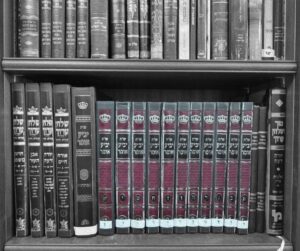
- Shoot (responsa) Yabia Omer (11 volumes) – long and complicated questions and answers. This is Maran’s main book, in terms of quality and quantity.
- Shoot Yechave Da’at (7 volumes) – short questions and answers, from what was asked as part of the lessons he gave on the radio.
- Shoot Hazon Ovadia (2 volumes) – questions and answers about the Passover holiday.
- Sefer Leviat Chen – an essay on the book “Mishna Berurah” Shabbat Laws, instructing on the issues that members of the Mizrahi sect should behave differently from the ruling of “Haftez Chaim” Zetzal.
- Kol Sinai – a book of legal rulings published in the weekly Kol Sinai for several years, and they were collected in a separate composition (which was out of print at the time and was not reprinted, because the same laws found their place in other compositions by Maran Zetzal).
- Book series Halichot Olam (8 volumes) – an essay on the book “Ben Ish Chai”, instructing on the subjects that must be behaved differently from the decision of the Gerih Zatzal.
- The series of books “Chazon Ovadia” about Shabbat and holidays and more (about twenty volumes) – a book of rulings with sources. This series of books was compiled by Maran at the end of his life. Due to the concise nature of the composition, these books have become the most studied Sephardic halachic books among the Torah community (the “Abarach”), even more than previous classic books such as “Ben Ish Chai”, ” The Palm of Life”, and others. In some of the books there are some commentaries on the legends, such as a commentary on the Book of Esther (in the volume on Purim), the Book of Ruth (in the volume on Shavuot), the Pesach Haggadah (in the volume on Passover). , Halachot Berakhot also appears.
- A series of books Maor Israel (2 volumes on the Shas) – commentaries on issues on the Talmud.
- Tabaat Hamelech (“The Book of the King’s Ring” – which is part three of the Book of Maor Yisrael) – Commentaries on the Book of Mishna Torah for the late Maimonides.
- Sefer Maor Yisrael sermons – obituary sermons and more.
- Book series Taharth Habait (“Purity of the House”, 3 parts) – rulings with sources in great detail, on the topic of purity of the family.
- Aaf Etz Avot (“Ancestral tree branch book”) – annotations and lessons on Pirke Avot (chapters of ancestors).
- Sefer Kaf Ha’ayim Chelek Yore Dea 2 – although Sefer Kaf Ha’ayim was compiled by the Rabbi Ya’akov Chaim Sofer zt’al, mm the composition was cut off in the middle of C. 17 (Ski’g) because that’s when the author of the Hachas passed away Zetzal, and Maran HaGrei Zetzal completed the essay until the end of the book (until the end of the 19th century), being only 18 years old at the time.
- The Masah Ovadia book – a book compiled from his speeches at the “Torah Sha’ba’al Fa” conferences.
Furthermore, Maran left behind him many manuscripts, which, according to the hypothesis, need several decades to edit and publish in their entirety. What is more, Maran wrote notes, glosses, and conclusions in all the first and last books he studied, numbering tens of thousands of books that were kept in his private library (indeed It was there for a reason, since it contained more books than any respectable public library).
His passing
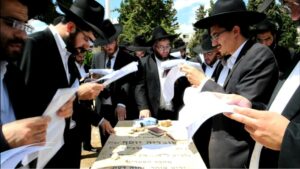 In 2013, the haters of the religion began making great efforts to obtain a law according to which yeshiva students would have to stop studying the holy Torah. Maran zt’l always took to his compassionate heart the troubles of the common people, and as a result of the fear of these terrible decrees, his pure body became very ill. After Maran had time to enthrone his son under the crown of “The First of Zion”, his successor Rabbi Rabbi Yitzchak Yosef Shalita, the author of the wonderful books “Yalkot Yosef”, Maran’s health deteriorated again, and on the holiday of Sukkot 5574, Maran was hospitalized at Hadassah Ein Kerem Hospital, and then on the third day of Hamer and Namur in Mar-Hashvan, the year of “Tzadik Atek” (574 AD) K – 2013 for their names), Maran Z’Zal was asked for the yeshiva of Ma’ale. He was ninety-three years old at the time of his death.
In 2013, the haters of the religion began making great efforts to obtain a law according to which yeshiva students would have to stop studying the holy Torah. Maran zt’l always took to his compassionate heart the troubles of the common people, and as a result of the fear of these terrible decrees, his pure body became very ill. After Maran had time to enthrone his son under the crown of “The First of Zion”, his successor Rabbi Rabbi Yitzchak Yosef Shalita, the author of the wonderful books “Yalkot Yosef”, Maran’s health deteriorated again, and on the holiday of Sukkot 5574, Maran was hospitalized at Hadassah Ein Kerem Hospital, and then on the third day of Hamer and Namur in Mar-Hashvan, the year of “Tzadik Atek” (574 AD) K – 2013 for their names), Maran Z’Zal was asked for the yeshiva of Ma’ale. He was ninety-three years old at the time of his death.
Maran’s funeral was attended by approximately eight hundred and fifty thousand people, and was the largest funeral in the history of Israel, and one of the largest in the history of all mankind. Among the pallbearers and eulogists were all the great men of Israel from all circles and denominations, among them the Gaon Rabbi Aharon Leib Steinman ztskal, the Gaon Rabbi Shmuel Auyerbach ztskal, the Rebbe of Vizhnitz Shalita, the Rebbe of Gor Shalita, the Rebbe From Belza Shalita, and many more.
Maran Zatzal was buried in the Sanhedria Cemetery in Jerusalem, and his grave has become one of the most central holy places in Israel, to which all those who wish flock to pray for salvation and mercy, and throughout the year, at all hours of the day, the Zion is crowded with people.
More on the subject
Everything mentioned in this is given in brief about the biography of Maran HaGerei zt’al, but this should not be considered “lines for his character” at all. To understand a little about who Maran was, it is highly recommended to read the obituaries delivered by our teachers, the head of the institutions of Israel:
